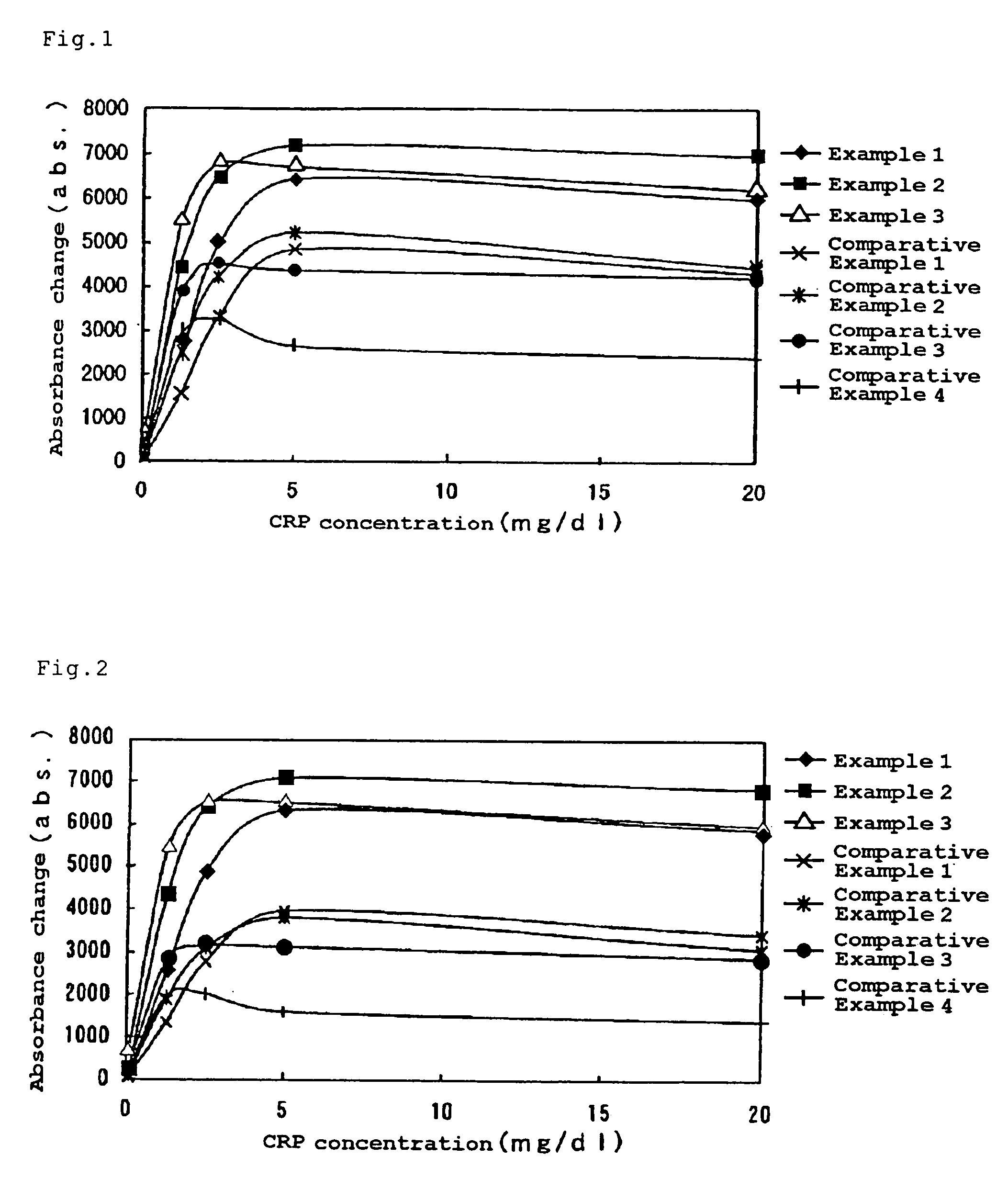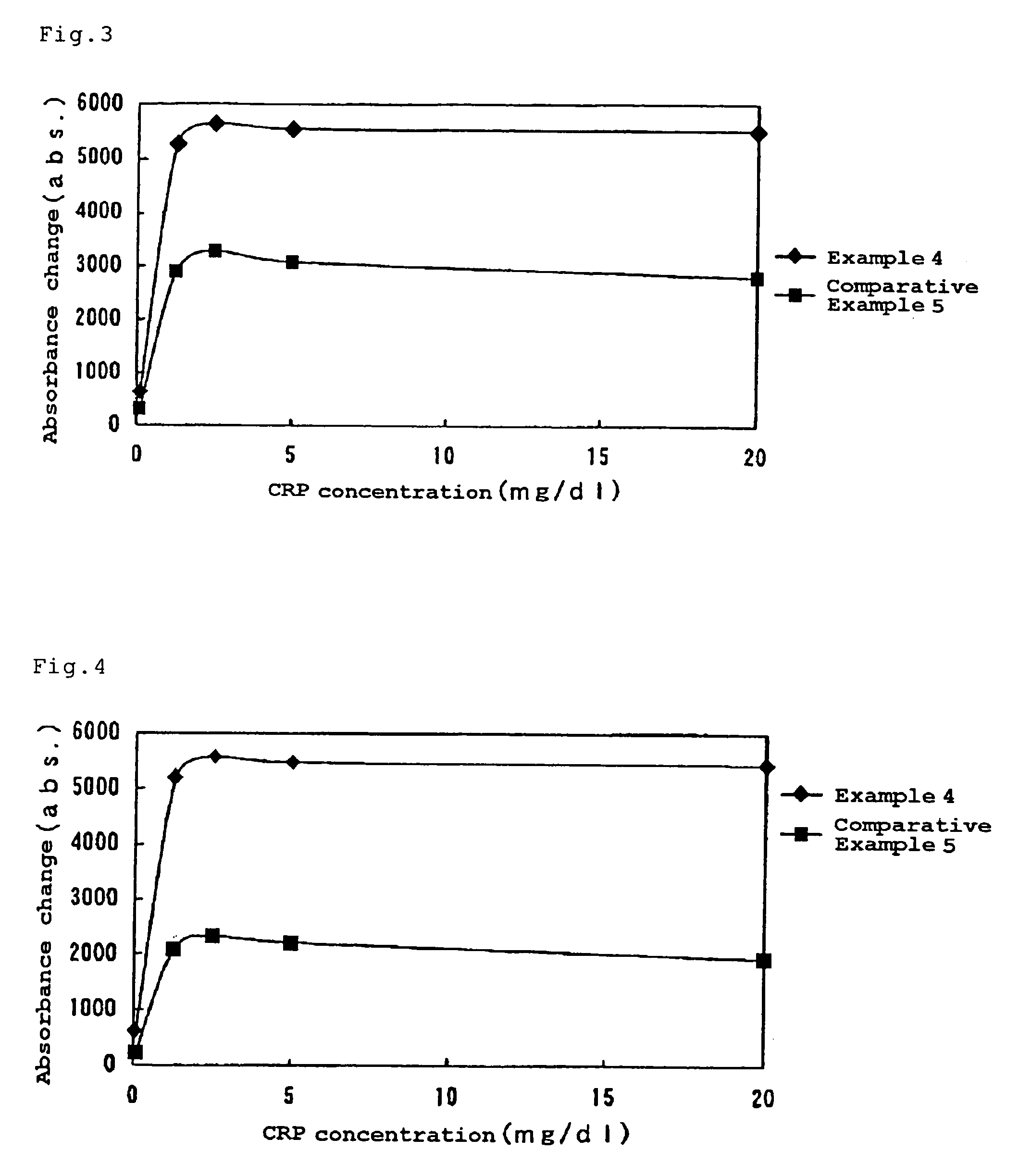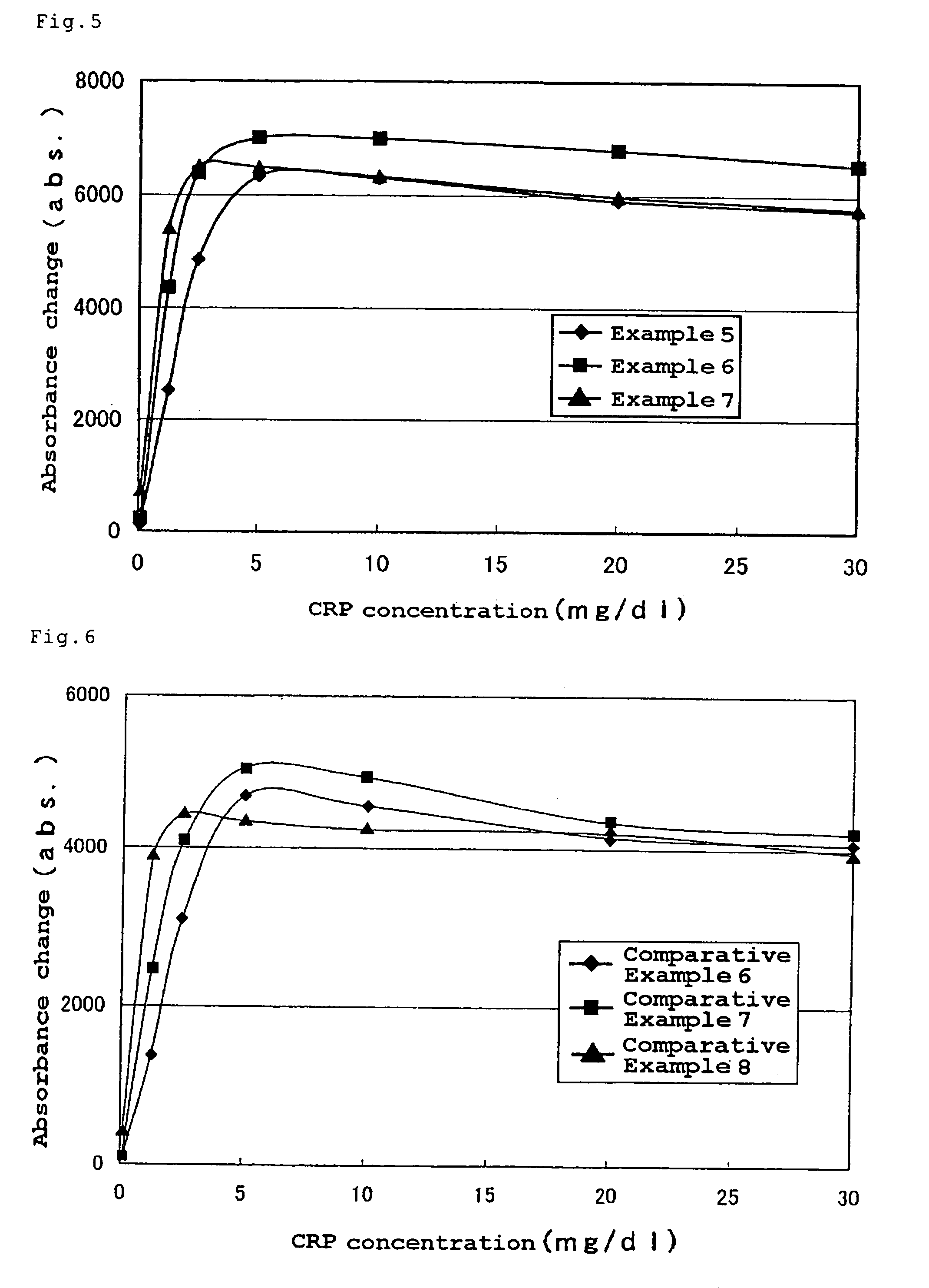Carrier particle latex for assay reagent and assay reagent
a carrier particle and assay technology, applied in the field of carrier particle latex for assay reagents and assay reagents, can solve the problems of inability to store for a prolonged period, affecting the stability of the assay, so as to improve the stability, improve the sensitivity, and the effect of high accuracy
- Summary
- Abstract
- Description
- Claims
- Application Information
AI Technical Summary
Benefits of technology
Problems solved by technology
Method used
Image
Examples
example 1
[Preparation of Carrier Particle]
[0074]A glass reaction vessel (2 L) fitted with a stirrer, reflux condenser, thermometer, nitrogen inlet and jacket was charged with 1500 g of distilled water, 280 g of styrene, 0.9 g of sodium styrenesulfonate and aqueous solution of 0.5 g of potassium persulfate dissolved in 10 g of distilled water, and purged with nitrogen gas, and then, the polymerization was performed at 70° C. with stirring for 24 hours.
[0075]After completion of the polymerization, the solution was filtered through a paper filter to obtain a carrier particle. The particle size and the surface sulfonic acid group amount of the resultant carrier particle were assayed by the methods described below. The results are shown in Table 1.
(Method for Measuring Carrier Particle Size)
[0076]A photograph of a carrier particle was taken using a transmission electron microscope, and subjected to an image analysis to determine the particle size.
(Method for Assaying Carrier Particle Surface Sulf...
examples 2 to 3
, COMPARATIVE EXAMPLES 1 TO 4
[0087]Except for charging the distilled water, styrene and sodium styrenesulfonate as indicated in Table 1, a carrier particle was produced in the same manner as Example 1.
[0088]The particle size and the surface sulfonic acid group amount of the resultant carrier particle were measured in the same manner as Example 1 and the results are shown in Table 1.
[0089]Then, BSA-containing glycine buffer (pH8.5) was prepared at the sensitization amount per surface area similar to that in Example 1, and assay reagents for each of Examples and Comparative Examples were prepared.
[0090]The resultant regents were examined for their assay sensitivities in the same manner as Example 1. The results are shown in FIG. 1.
[0091]As evident from FIG. 1, the assay reagents prepared in Examples 2 and 3 exhibited satisfactory results similarly to Example 1. On the contrary, the assay reagents prepared in Comparative Examples 1 to 4 exhibited low sensitivities.
[0092]Then the reagen...
examples 5 to 7
, COMPARATIVE EXAMPLES 6 TO 8
[Preparation of Carrier Particle]
[0100]A glass reaction vessel (2 L) fitted with a stirrer, cooling coil, thermometer, jacket and the like was charged with the starting material whose composition is shown in Table 2, purged with nitrogen, and subjected to a copolymerization for 48 hours with controlling the reaction temperature from 70° C. to 71° C. with stirring. As a catalyst for polymerization, aqueous solution of 0.5 g of potassium persulfate dissolved in 10 g of distilled water was employed. A nonionic emulsifier (EMULGEN 804S, manufactured by Kao Corporation) was employed in Examples 5 and 6 and Comparative Example 6, and an anionic emulsifier (NEOPELEX F-25, manufactured by Kao Corporation) was employed in Example 7 and Comparative Example 7.
[0101]The resultant carrier particles were taken out and examined for their particle sizes and the surface sulfonic acid group amounts similarly to Example 1.
[0102]The results are shown in Table 2.
[0103]
TABLE ...
PUM
| Property | Measurement | Unit |
|---|---|---|
| particle size | aaaaa | aaaaa |
| particle size | aaaaa | aaaaa |
| particle size | aaaaa | aaaaa |
Abstract
Description
Claims
Application Information
 Login to View More
Login to View More - R&D
- Intellectual Property
- Life Sciences
- Materials
- Tech Scout
- Unparalleled Data Quality
- Higher Quality Content
- 60% Fewer Hallucinations
Browse by: Latest US Patents, China's latest patents, Technical Efficacy Thesaurus, Application Domain, Technology Topic, Popular Technical Reports.
© 2025 PatSnap. All rights reserved.Legal|Privacy policy|Modern Slavery Act Transparency Statement|Sitemap|About US| Contact US: help@patsnap.com



